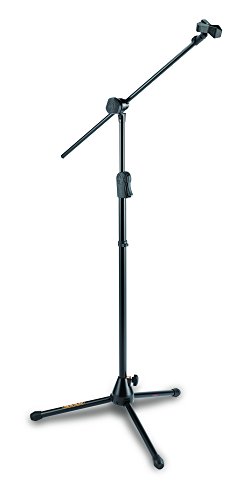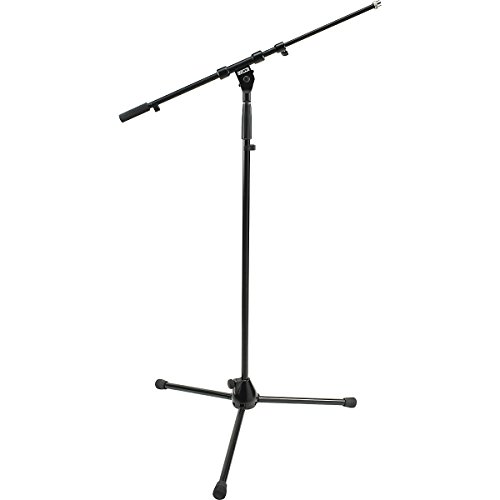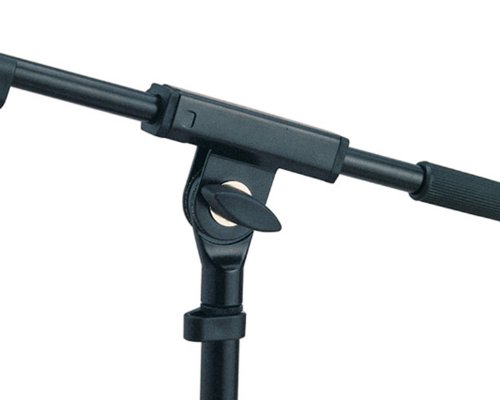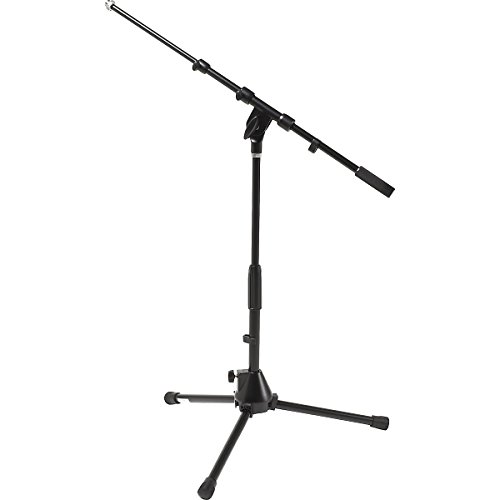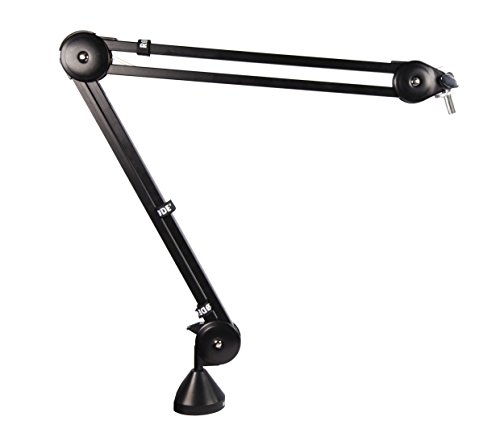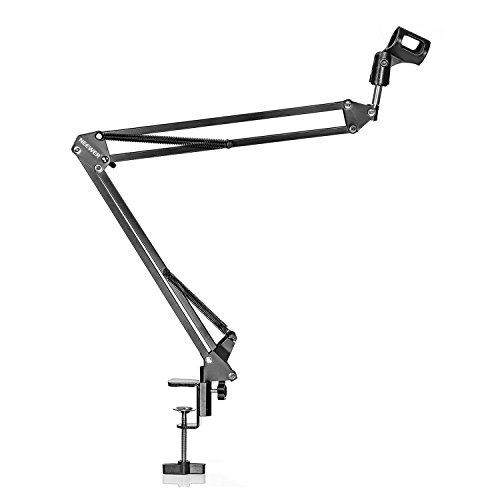Many say they are just an accessory, but the importance of getting one of the best mic stands around cannot be denied. Microphone stands are an important part of any stage or studio setup. There are quite a few varieties available, and to get the best one for you as an individual, it's important to know the different types in and out.
Table of Contents
- The Best Microphone Stands of 2024
- 1. On Stage MS7201B Microphone Stand
- 2. Pyle Microphone Stand - Universal Mic Mount with Heavy Compact Base
- 3. On-Stage MS7701B Tripod Microphone Boom Stand
- 4. Hercules MS533B Hideaway Boom Stand
- 5. Konig & Meyer 25400 Boom Mic Stand
- 6. DR Pro Tripod Mic Stand Telescoping Boom
- 7. K & M Very Low Microphone Stand
- 8. DR Pro DR259 MS1500BK Low Profile
- 9. RODE PSA1 Swivel Mount Studio Mic Arm
- 10. NEEWER Suspension Boom Scissor Arm
- Microphone Stand Buying Guide
Whether you are a recording artist or an orator, you will inevitably come across the need for a mic stand. So here's everything you need to know before buying the perfect one.
At a glance: Our top 3 picks

On Stage MS7201B Microphone Stand

- Stable Round Base
- Wide Height Range
- Powder Coated Tube

Pyle Microphone Stand - Universal Mic Mount with Heavy Compact Base

- Stable Round Base
- Wide Height Range
- Powder Coated Tube

On-Stage MS7701B Tripod Microphone Boom Stand

- Stable Round Base
- Wide Height Range
- Powder Coated Tube
The Best Microphone Stands of 2024
1. On Stage MS7201B Microphone Stand
This microphone stand from On Stage is pretty popular among performing artists. It has a round base that is very stable with a diameter of 10 inches. The internal counter clutch holds the upper shaft in place. The height range is pretty wide, from 34 to 60 inches, so you can adjust the stand to your liking. This should cater to almost all heights. The end cast is solid, with 5/8 to 27 threads. The tubing has been finished with powder coating, providing protection against moisture and dust. It's a simple and lightweight stand that's perfect for professional use.
Pros:
+ Stable Round Base
+ Wide Height Range
+ Powder Coated Tube
Why We Liked It - With this stand you have many color choices too. There are black, silver and white options that go well on stage. You can match this with your other stage equipment for a consistent and professional feel.
2. Pyle Microphone Stand - Universal Mic Mount with Heavy Compact Base
The second microphone stand on our list is made by Pyle. It is a reliable, durable product that delivers great value considering the low price tag it’s available for.
Let’s have a look first at its specifications. It is height adjustable, allowing you to alter it so that it can be anywhere between 2.8ft and 5ft. The threading used is standard for a mic stand of its type, which is 5/8”.
A key feature of this stand is its base. Weighing just under 10lbs, it offers ample stability despite its diameter of 235mm. To further enhance its stability, it has rubber on the bottom of the base to guard against any slipping.
It is quite simply a no-frills mic stand that is built to last. If you’re looking for a product that can withstand live performance or use in a recording or practice studio, then this is the ideal product, especially if you don’t want to break the bank.
Pros:
+ Sturdy Base
+ Adjustable Height
+ Standard Thread
+ Black Finish
+ Money Back Guarantee
Why We Liked It - It offers excellent value for money while delivering durability and stability.
3. On-Stage MS7701B Tripod Microphone Boom Stand
Our next product is a tripod mic stand that’s been made by OnStage. It’s a lightweight option that’s ideal for use in a studio or more relaxed live performances.
One of the standout features of this stand is that it includes a removable boom arm that is 30” long. This is perfect for positioning and makes it a versatile option, as it can be used for getting close to musical instruments.
Another key feature of this stand is its portability. It’s a lightweight unit that weighs in at under 5lbs. It also can be collapsed into a compact size so that it can be easily transported.
Despite being lightweight, it is still sturdy and durable. That’s because of the materials that it has been constructed from. The legs are composed of steel-reinforced plastic, while the mid-point locking clutch is also made from steel.
In terms of height adjustability, it offers a range of between 36” and 63”.
Pros:
+ Removable Boom Arm
+ Compact When Collapsed
+ Portable
+ Lightweight
+ Durable
Why We Liked It - It’s a versatile, easily-adjustable tripod mic stand that’s both lightweight and durable, making it perfect for the road or the studio.
4. Hercules MS533B Hideaway Boom Stand
This boom stand from Hercules is all about providing you with convenience during a performance. The boom is 30.7 inches, and you can adjust both the height and the angle in seconds, simply by loosening the knob. Similarly, the height can be adjusted between 42 and 94 inches. The best thing about this setup is the Quick-N EZ adaptor that allows you to quickly and easily slide the microphone in. This makes it an ideal stand for those hurried setups where you don't have a lot of time to fix equipment. The base acts as a tripod stand. It's super light too - weighing in at 5.2 pounds.
Pros:
+ Adjust both Height and Angle
+ Quick-N EZ adaptor
+ Light Tripod Stand
Why We Liked It - It's super easy and quick to adjust, which is why it is one of the most compatible stands from Hercules. When you're performing on stage, struggling to fix the microphone, or not being able to remove it, is pretty embarrassing. With this epic stand, that's not going to happen.
5. Konig & Meyer 25400 Boom Mic Stand
This black colored mic stand from Konig and Meyer is pretty lightweight, weighing a little over 4 pounds, making it ideal for mobile musicians. If you have a heavy, restictive stand that doesn't allow you to roam around on stage, it'll effect your performance negatively. A lot of musicians release their energy by moving around. With this stand, you can also adjust both the length and the tilt angle of the boom. The base tubes have caps that make it stable on almost all surfaces. As a result, there is little to no noise when the stand is moved.
Pros:
+ Lightweight
+ Ideal for Mobile Musicians
+ Stable with the help of Base Tube Caps
Why We Liked It - If you're looking for simplicity, then this stand is the answer. It's thin and lightweight, making it very inconspicuous. The affordable price makes it great for amateurs who have a limited budget for support equipment.
6. DR Pro Tripod Mic Stand Telescoping Boom
This boom stand is simple looking and great for on-stage use. It can be used for any kind of setting; be it at a school, a concert stage, or church. The boom’s basic length is 19 inches, but it extends up to 31 inches. As for the stand’s height, it starts from 40 inches and can go up to 69 inches. Both of these can be easily adjusted. The powder coated finish on the stand makes it durable and resistant to dirt. It's built using industrial standards that ensure the product is well suited for professional use. Considering this, it's most definitely good value for money.
Pros:
+ Great for On-stage use
+ Easily adjustable height
+ Powder coated finish
Why We Liked It - This stand can easily be integrated into any studio or stage. It wouldn't be wrong to say that its use therefore can be applied to diversified settings. It will also work well with most microphones, a mix of efficiency and durability at its best.
7. K & M Very Low Microphone Stand
If you're looking for a low-height boom stand, then this one should be a good fit for you. The boom arm is made from two pieces so you can adjust the length according to your own preference. This stand is great for a bass drum or for specialty use. This is no ordinary stand, and it is pretty sturdy - if you try to push it down, you'll most likely fail. This is due to the tough and high-quality tripod legs. Although it may seem a little on the expensive side, in return you get a product that is sure to last for a long time.
Pros:
+ Low height
+ Two-piece
+ Perfect for Bass Drum or Speciality Use
Why We Liked It - It's not only sturdy; it's portable as well. The foldable tripod legs mean you can easily carry it anywhere. It won't take up much space in your belongings as it's small, even more so when folded.
8. DR Pro DR259 MS1500BK Low Profile
This low-level boom stand is every bit professional. It's also super customizable in terms of length. From boom to tripod legs, you have an ample range. Each leg extends up to 19 inches, the boom arm can go from between 19 inches to 31 inches, and the height can be adjusted between 9 and 17 inches. All the tubes are considerably thick, and finished with a powder coating to provide necessary protection. DR makes professional quality products, therefore the price is higher compared to others. However, purchasing the Dr Pro means you get something that will last for years to come.
Pros:
+ Low Level Boom
+ Ample Range in Height
+ Finished in Powder Coat
Why We Liked It - It is very professional. From the thick tubes to the shiny black finish, everything shows that it is designed for on stage use.
9. RODE PSA1 Swivel Mount Studio Mic Arm
This desk-mountable boom arm microphone is useful in all types of settings. There are two desk mounting options, and their reach, both horizontally and vertically, is ample. Horizontally, it can reach 32 inches, whereas vertically, it can stand to 33 inches high. You can swivel the arm in both directions to get the perfect angle, keeping the microphone comfortable. Velcro cable wraps further secure cables to the structure, and mean you can stow them away neatly. It can withstand a weight of up to 4.4 pounds, including the shock mount. It works best with RODE microphones, but can be used with almost all other microphones within that weight limit.
Pros:
+ Desk Mountable
+ Swivel in Both Directions
+ Velcro Cable Wraps to secure Cables
Why We Liked It - This table and desk stand for microphones is proof of RODE’s claim of innovation. It makes things so much easier, and you can adjust the mic to whatever position you like. It should work well in settings where there are speakers changing continuously.
10. NEEWER Suspension Boom Scissor Arm
This is a very convenient desk mount mic stand that can be fixed easily to any table using the table mount clamp included in the product. It's suitable for virtually all uses. The black scissor arm is easily adjustable, so you can set it to any position you deem comfortable. It will work smoothly with many microphones, but it is not suitable for the Blue Yeti USB Mic, so check out our review on these pop shields for Blue Yeti mics. Not only is it easy to use, it's also easy to carry, thanks to the folding arm.
Pros:
+ Convenient
+ Mount Clamp for easy fixing
+ Scissor arm for easy positioning
Why We Liked It - It's incredibly cheap, even for a desk mount mic stand. It's surprising to see such decent quality at such a low price, but perhaps this is why it's such a popular choice for people from varying industries. From radio jockeys to recording artists, everyone seems to find it great value for money.
Microphone Stand Buying Guide
Types of Microphone Stands
Standard Stands
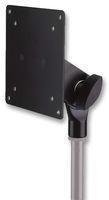 The "stand-up straight" variety of stands are the simplest out there. These can further be classified as a tripod, and round base stands. With Tripod stands, three legs make up the base. They're pretty common - in fact, these tend to be the cheapest ones around. Round base products have a base made from metal or plastic and are a bit more stable, including on-stage - they are good for singers.
The "stand-up straight" variety of stands are the simplest out there. These can further be classified as a tripod, and round base stands. With Tripod stands, three legs make up the base. They're pretty common - in fact, these tend to be the cheapest ones around. Round base products have a base made from metal or plastic and are a bit more stable, including on-stage - they are good for singers.
This kind of mic is best suited for those who will want to use it while standing. It has a very tall height, which is usually adjustable. These are a lot more stable and do not tend to flip over. For instance, the Ultimate Support PRO-ST Pro Series Microphone Stand with an Oversized Steel Tubing has a heavy rounded base that keeps the stand in position at all times.
Boom Stands
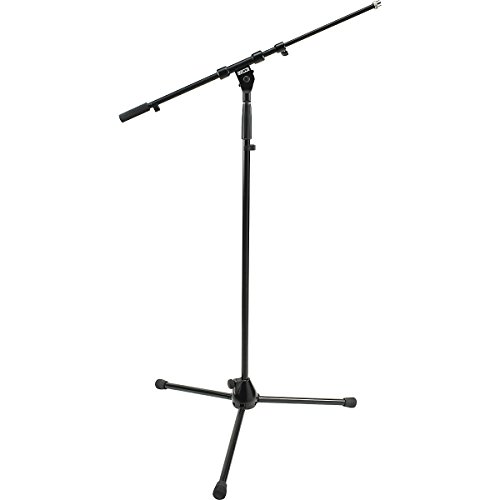 These stands are similar to standard mic stands, but with an arm attached. Their advantage is that they can provide a longer reach, and can be adjusted to any angle. Boom stands are the best choice when you have varying heights, for example, if you have an adjustable music sheet stand or certain angles that you need the microphone to reach. A lot of the time, people are sitting down, so they'll need a lower height. In a setting like that, this kind of mic stand is the best.
These stands are similar to standard mic stands, but with an arm attached. Their advantage is that they can provide a longer reach, and can be adjusted to any angle. Boom stands are the best choice when you have varying heights, for example, if you have an adjustable music sheet stand or certain angles that you need the microphone to reach. A lot of the time, people are sitting down, so they'll need a lower height. In a setting like that, this kind of mic stand is the best.
There is, of course, room for adjustment, both in terms of horizontal and vertical reach. An example of this is the DR Pro Tripod Mic Stand with Telescoping Boom, where the boom and angle arm can be adjusted for height, both at the same time. This particular kind is very useful.
Desk Stands
 Desk stands, or 'desktop stands,' can be attached to a desk. These are smaller than straight stands and can be used in studios for podcasting or radio shows. However, the use of this particular stand is growing, as it's easy to use with almost any desk.
Desk stands, or 'desktop stands,' can be attached to a desk. These are smaller than straight stands and can be used in studios for podcasting or radio shows. However, the use of this particular stand is growing, as it's easy to use with almost any desk.
In a sedentary setting, this stand is the best option you can go for. Other stands can be a bit of a fuss when you have furniture close by. Since this mounts on a table, it becomes part of the furniture. It is straightforward to mount too, as you can see with RODE PSA1 Swivel Mount Studio Microphone Boom Arm.
Low Profile Stands
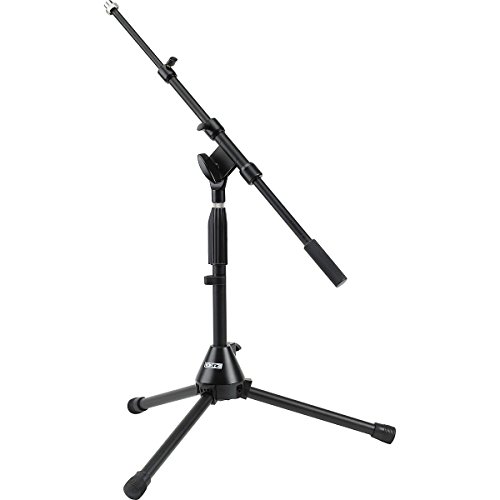 These stands have a short height, both for the stand itself and the boom arm. They're used mainly for kick drums (click here to find your mic!) or guitar cabs. These, too, have an adjustable height, but the range, of course, is smaller compared to a stand-up microphone stand or a boom arm stand.
These stands have a short height, both for the stand itself and the boom arm. They're used mainly for kick drums (click here to find your mic!) or guitar cabs. These, too, have an adjustable height, but the range, of course, is smaller compared to a stand-up microphone stand or a boom arm stand.
Height Range
Almost all the microphone stands have an adjustable height. However, the range can vary quite significantly. This is an important consideration and should commensurate to your own height. With the boom arm stand, you might get away with a smaller height in certain situations, such as if you had your keyboard on an adjustable stand, but with a typical stand, you need something that can reach you.
The height depends on the setting or uses, too. While a low profile stand may be suitable for kick drums, it cannot be extended enough for overhead drums. Some heights may be too low for covering a choir.
Types of clutches
The clutch is what allows you to adjust the height. This, of course, is important because, without it, the mic stand will not be as tall as you want it to. There are two kinds of clutches: twist and grip. The former is most widely used, and as the name suggests, twists to tighten. The good quality ones tighten pretty fast while others take several turns. Grip clutches utilize a one-handed squeeze to tighten into place. One obvious advantage is that this is much quicker to achieve in a live setting - this type of clutch tends to be the best.
For boom stands, there is another kind as well - a screw or a knob that can tighten a collar or push it closer to the tube. These vary a lot from one model to another. You have something similar for adjusting the angle as well.
Weight
Weight is an important consideration when buying a mic stand. A lot of people generally assume that a heavier stand would not make a portable or suitable choice on stage. On the contrary, a light stand can be less stable when compared with heavy ones. However, now some stands are incredibly lightweight but still quite stable, such as those tripod stands. If you are going to move with the stand a lot, then the obvious choice should be a light weighted one.
See Also: Best Guitar Stands for Electric and Acoustic Instruments
Portability
Another misconception about mic stands is that a heavier one would be difficult to carry around. That's not always the case, as some lightweight ones can be difficult to carry too. It all depends on the make and its capability. If the stand is foldable, it becomes all the more easy to pack up and take wherever.
A lot of people think tripod stands are not highly portable. That's not always the case, as some newer models have foldable legs, making the stand much smaller. As for the ones with a rounded base, it's also easier to carry them. The stand can be removed from the base and packed separately with the other equipment. Perhaps this is why this type of stand is most commonly used.
Pricing
The pricing is yet another important factor. To get high quality, you have to spend a little more money. In a professional setting, it makes sense to go for something more expensive from a known brand. For amateurs, a moderate-quality, lightweight stand should do the job. The prices vary greatly, but most microphone stands cost less than $100. Few stands from very high-end brands cost more than that, but you should be able to get a decent quality one of any kind within this range.
Accessories
One of the reasons why mic stands so widely used is, as the name states, because they are useful for holding microphones. However, they have some awesome other benefits as well. There are numerous accessories you can use with the stand to make it more functional. Some of these are:
Cup holders: You can easily find cup holders to attach to the stand’s tube. This accessory works out well when you are continually speaking or singing and need water for hydration. It's cheap and works with virtually all stands, be it standard or boom.
Phone holders: A lot of time, for various different reasons, you need your phone in front of you. You can now attach the phone to the stand, so you can read lyrics off it, record the sound on the phone as well, or even play from it. This isn't just for your phone; you can also attach tablets to these holders. Much like cup holders, these easily attach to almost all the stands available.
Boom arms: Another handy accessory for your microphone stand is a second boom arm. This can attach to the stand at any point, transforming it into a multiple microphone stand. Such an addition is necessary when you're playing the guitar and want the sound recorded or amplified. You can quickly align the mic with the guitar’s position.
Pop filters: For recording vocals, pop filters are necessary to maintain quality. They do this by protecting the sound from plosives that are often bad and can ruin the vocals. It also helps when dealing with any proximity effects. Usually, these pop filters come in a variety of material choices, from nylon to metal. The metal ones tend to be a lot sturdier and do the job well. However, nylon ones can be used too in place of metals. It's better than having no filter at all!
Headphone hanger: Another great attachment for your mic stand is the headphone hanger. It can be so convenient while recording because you don't have to remove the headphones then place them somewhere else; you can hang them on this hanger and go about your business!
All these accessories are cheap and easily available. There are numerous other accessories as well, like goosenecks, vocal booths, and stereo bars. They can make your recording sessions, or time on stage, very easy.
Carry Bags
If you have a lot of mic stands, carrying all of them can be quite a hassle. The best solution for this is a carry bag, which can accommodate multiple stands and provide necessary protection and convenience. Rather than transporting each stand separately, it's a lot better to have them all in one bag that's easy to carry around. Those who move around a lot, and have invested in multiple stands, should have such a bag. Your stand will only last if you maintain it well, so make sure you take care of it while in transit.
Choosing the right stand
Now that you know each type of mic stand, their prices, and capabilities, it will be easier to choose the best product. However, there should be an evaluation of your own circumstances as well. The type of stand you want first depends on why you need it. For example, if you're buying something for podcasts, then a desk stand is the ideal one. If you are buying for a child, then a tripod boom stand might be the right choice. If you're going to use it in multiple settings, like in studios, or in classes, then go for the one that is most suitable for these. You don't necessarily have to buy separate stands for each use - they are pretty multifunctional, especially if you add accessories.
What Is The Best Stand For A Podcast Setup?
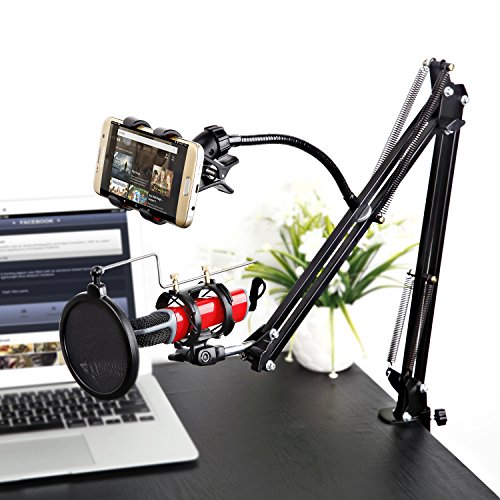 For a podcast setup, the recommended product is the desk stand. These are designed for uses that don't necessarily require a lot of movement. These stands, as explained, attach to a desk. They can be increased in length, as well as adjusted to many angles. For this reason alone, it's well suited for this purpose - it just might need to be adjusted or swiveled around during the recording of the podcast.
For a podcast setup, the recommended product is the desk stand. These are designed for uses that don't necessarily require a lot of movement. These stands, as explained, attach to a desk. They can be increased in length, as well as adjusted to many angles. For this reason alone, it's well suited for this purpose - it just might need to be adjusted or swiveled around during the recording of the podcast.
Another reason why you might want to use this particular mic stand is that you can easily attach it to any desk. This makes it very usable in every kind of recording setting, and not just for podcasts. Secondly, it fits most microphones, which is yet another advantage. These stands are sturdy enough to hold the microphone, as well as shock mounts.
You can also use a boom stand for the same purpose if you don't have a desk to attach the stand to. This kind of stand has essentially the same benefit in terms of convenience and reach. The arm can be swiveled and adjusted to any angle you require. Similarly, the length of the arm is long enough to reach a decent distance.
Podcasting has become very popular over the years and, to have the highest quality podcast, your equipment should be the best as well. People assume that the stands are not that important, but the truth is they are vital for your smooth vocal delivery. No matter how great the microphone is, if it's not positioned well, your recording will be lackluster.
Why the microphone stands?
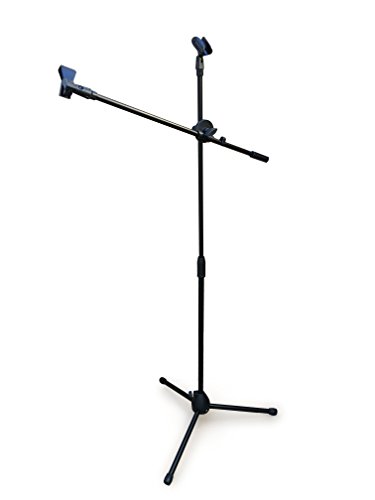 It's completely normal if you're unfamiliar with, or don't really understand the purpose of a microphone stand. These stands hold the microphone while you speak, record, or perform. The microphone is attached to the top of the stand, removing the need to hold it constantly.
It's completely normal if you're unfamiliar with, or don't really understand the purpose of a microphone stand. These stands hold the microphone while you speak, record, or perform. The microphone is attached to the top of the stand, removing the need to hold it constantly.
It can be exhausting to keep the microphone in your hand all the time. Whether you are using it on stage or in the studio, it can affect your performance. A stand provides protection, as well as convenience, during such stints.
There are numerous types of stands, each having its own set of benefits. The most commonly found are straight up stands with tripod legs at the bottom. Another similar kind is the rounded base ones, which instead of having tripod legs, have a solid circular base. Another type is the boom stand, which has another arm attached horizontally to the vertical tube. This arm is termed as the boom arm and can be adjusted in length and angle. It provides a lot more room for adjustment - it adjusts according to your position rather than you having to adjust yourself for the stand. The final type you should know about is the desktop stands, which attach your microphone to a desk.
Nearly all stands can be changed in height to suit your needs. Some have low heights, designed for kick drums or other specialty uses. The range varies and is, of course, important both for efficiency and comfort.
Microphone stands are useful, not just for performance or recording, but also when it's not in use. Rather than keeping the mic on the floor, or somewhere where it can potentially be damaged, the stand provides a solution for keeping it safe.
Are the microphone stands compatible with all mics?
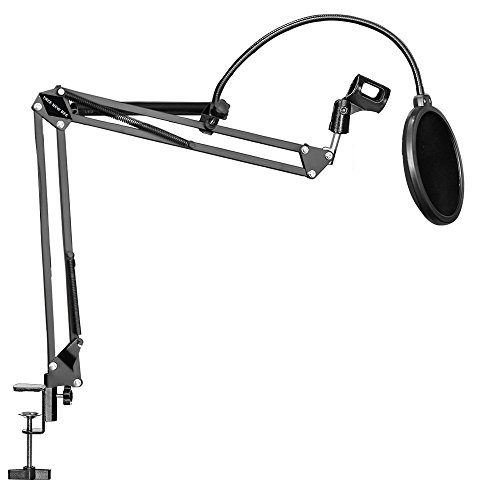 Yes, most of them are suitable for almost all microphones, but you need to be sure before you complete the purchase. Microphone compatibility is usually indicated in the product description. For instance, some mic stands are not compatible with Blue Yeti microphones. If you need the stand for one mic in particular, it wouldn't be hard to find one. However, when looking for a set of microphones, only buy the one that is explicitly designed to fit all microphones universally. Most microphone stands have standard threads that can fit all mics and shock mounts easily.
Yes, most of them are suitable for almost all microphones, but you need to be sure before you complete the purchase. Microphone compatibility is usually indicated in the product description. For instance, some mic stands are not compatible with Blue Yeti microphones. If you need the stand for one mic in particular, it wouldn't be hard to find one. However, when looking for a set of microphones, only buy the one that is explicitly designed to fit all microphones universally. Most microphone stands have standard threads that can fit all mics and shock mounts easily.
The stand and mic should be compatible weight-wise, as well. Some microphones are heavy and, therefore, require a heavy-duty stand. A lightweight stand may not be able to hold this kind of mic very well, so make sure you check out the weight of the stand to see if it's appropriate for the mic you have.
Can I attach any other accessories with the stand?
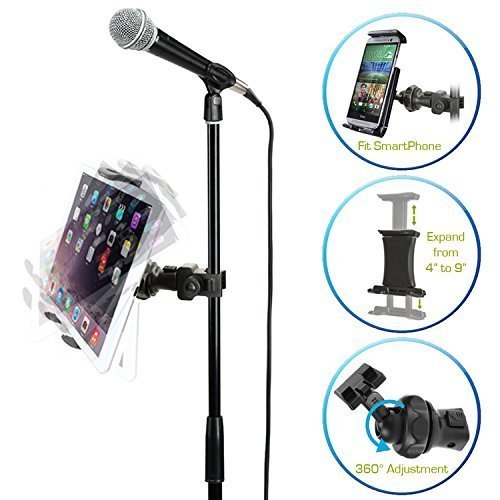 There are numerous accessories available online to increase the functionality of your mic stand. Yes, you can hang or fix a lot more than just microphone to these stands using accessories. There are attachments available for adding another microphone, your smartphone, and an attachment to hang your headphones. For instance, if you need to attach another microphone for recording your guitar, you can add a boom arm like the On Stage Posi lock Sidemount boom. It can be placed onto any position of the stand and used for attaching another mic.
There are numerous accessories available online to increase the functionality of your mic stand. Yes, you can hang or fix a lot more than just microphone to these stands using accessories. There are attachments available for adding another microphone, your smartphone, and an attachment to hang your headphones. For instance, if you need to attach another microphone for recording your guitar, you can add a boom arm like the On Stage Posi lock Sidemount boom. It can be placed onto any position of the stand and used for attaching another mic.
Similarly, you can use glass holders, headphone hangers, or a phone and tablet holder. This makes it multipurpose. Not only do you have the convenience of holding the mic, but also other necessary aspects, such as holding a phone to record or read lyrics from.
These accessories are designed to fit universally any mic stand, so whether you have a standard one or a boom stand, it should attach seamlessly. Also, these accessories are affordable.
This works out great, both in the studio and on stage. When you're in the studio, you frequently need to take off your headphones or use your phone. While on stage, you can get thirsty and need water, which can be placed right on the stand in front of you. This is why mic stands are used and loved by musicians and performers everywhere.
I’m 6 ft tall, which mic stand should I get?
The best stand for your height would be the standard one, with either a tripod or a solid base. These have quite a wide range in terms of height, so even the tallest individuals can easily use the mic stand. Boom stands are good for tall people as well because, with the stand and boom arm, you get the right length to reach you. These stands’ heights are easily adjustable, and, depending on the clutch type, you can do it in just one go. Some are mobile, too, i.e. you can remove them from the base and take with you as you move around on stage. You don't have to hunch or fix yourself in one position.
What is specialty mic stands?
Some stands are termed as specialty mic stands because they are designed for special purposes. For instance, studio booms are taller than 6 feet and can be utilized as overhead mics for drums, choirs, and orchestras. They have wheels to make them mobile and are designed to withstand heavy-duty microphones. They usually have an adjustable counterweight to achieve the necessary balance, and the height is adjustable too, of course, to reach even farther positions.
If you liked the review, please leave your feedback.

